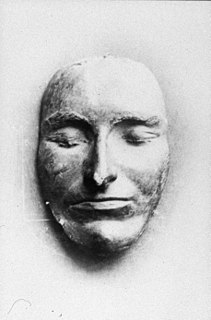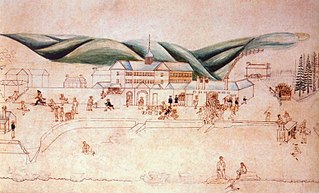
Matthew Brady was an English-born convict who became a bushranger in Van Diemen's Land. He was sometimes known as "Gentleman Brady" due to his good treatment and fine manners when robbing his victims.

Alexander Pearce was an Irish convict who was transported to Van Diemen's Land for seven years for theft. He escaped from prison several times. During one of these escapes he allegedly became a cannibal, murdering his companions one by one. In another escape, with one companion, he allegedly killed him and ate him in pieces. He was eventually captured and was hanged and dissected in Hobart for murder.

Martin Cash was a notorious convict bushranger known for escaping twice from Port Arthur, Van Diemen's Land. His 1870 autobiography The Adventures of Martin Cash, ghostwritten by James Lester Burke, a former convict, became a best seller in Australia.

Lawrence Kavenagh was a convict bushranger known for escaping from Port Arthur, Van Diemen's Land, with Martin Cash and George Jones.

William Westwood, also known as Jackey Jackey, was an English-born convict who became a bushranger in Australia.

John Dunn was an Australian bushranger. He was born at Murrumburrah near Yass in New South Wales. He was 19 years old when he was hanged in Darlinghurst Gaol. He was buried in the former Devonshire Street Cemetery in Sydney.
John Francis was one of a party of bushrangers who held up the Melbourne Private Escort Company's regular escort of gold from the McIvor diggings at Heathcote, Victoria and Kyneton on the morning of 20 July 1853. At least six men were involved, five of whom including John Francis and his brother George (c1825-1853) were apprehended. George Francis committed suicide while in custody, but by turning Queen's Evidence John Francis escaped punishment. His other three companions were hanged.
Francis McNeiss McNeil McCallum was a notorious bushranger during the early part of the Victorian Gold Rush in Australia.

During the first eighteen months of the Victorian gold rush, the section of St Kilda Road between Melbourne and Canvas Town was the scene of frequent hold-ups by armed bandits and bushrangers, mostly former convicts from Van Diemens Land.
The Frank Gardiner–Ben Hall Gang was an informal group of bushrangers who roamed the central west of New South Wales, Australia in the 1860s. The gang was responsible for the largest gold robbery in Australia’s history at Eugowra Rocks. The gang had its origins in 1861; its demise came with the execution of John Dunn in 1866.
Daniel Priest (1814–1883) was a convict and bushranger in nineteenth century Tasmania. Priest escaped from the penal settlement at Port Arthur and became a bushranger while trying to avoid arrest.
Henry Saxelby Melville Wintle, commonly referred to as Henry Melville, was an Australian journalist, author, occultist, and Freemason best remembered for writing the play The Bushrangers, his historical work The History of Van Diemen's Land From the Year 1824 to 1835, and his occult philosophical work Veritas: Revelation of Mysteries, Biblical, Historical, and Social by Means of the Median and Persian Laws. His life was dramatized in the 1882 Princess Theatre (Bendigo) production Found, or Found Drowned.
Norfolk Island convict mutinies were a series of armed uprisings by convicts on the penal colony of Norfolk Island. All were unsuccessful.
This article outlines the history of Smooth Island, popularly known as Garden Island, in Norfolk Bay, Tasmania. The names come from the island's gently undulating topography and lush vegetation in comparison with the stony mainland. It has been privately owned since 1864.
Solomon Blay was an English convict transported to the Australian penal colony of Van Diemen's Land. Once his sentence was served, he gained notoriety as a hangman in Hobart, and is believed to have hanged over 200 people in the course of a long career spanning from 1840 to 1891. This made him the longest serving hangman in the British Empire.

The Cooking Pot Uprising, also known as the Cooking Pot Riot, was an uprising of convicts led by William Westwood on the penal colony of Norfolk Island, Australia. It occurred on 1 July 1846 in response to the confiscation of convicts' cooking utensils under the orders of Major Joseph Childs, who was in command of the colony.
George Jones was a convict bushranger known for escaping from Port Arthur, Van Diemen's Land, with Martin Cash and Lawrence Kavenagh.
Crime in Tasmania is controlled by Tasmania Police, the Tasmanian justice system and the Tasmania Prison Service. Crime statistics for Tasmania are provided on the Tasmania Police website.












